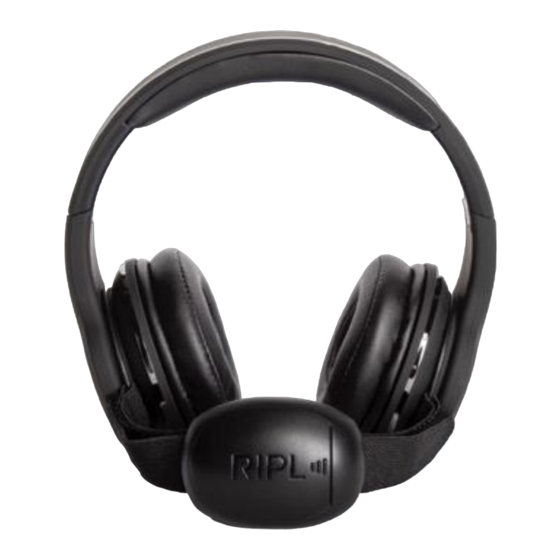
Advertisement
Quick Links
Advertisement

Summary of Contents for Ripl One
- Page 1 Ripl One User Guide v2019.RO.UG.2...
- Page 2 Do not listen at high volume levels for long periods. ***insert IEC 60417-6044 warning symbol Use responsibly - Do not use Ripl when it is unsafe to do so, such as while driving a car, riding a bicycle, crossing streets, or operating heavy equipment.
- Page 3 Ripl Sub (Sub). 2. Ripl One can be used several ways – attaching the Sub directly to your headphones, attaching the Sub to your headphones with the headphone attachment kit (HAK), and attaching the Sub to the band:...
- Page 4 Once the placement of the disc on the ear cup is identified, then gently peel the protective layer from the base and repeat the above steps. When you have found the comfortable position to secure the base, firmly press and allow the sticker to set for two hours, as shown in Figure 2d. PLEASE NOTE – once you firmly press and attach the base unit to your headphones, the sticker will form a bond and will be very difficult to remove.
- Page 5 When you see “Ripl” appear in your device’s Bluetooth screen, push it to connect the Sub. Once the Sub is connected to your device, you will hear “Connected.” Please note – during your first pairing, you may need to turn off (below) and turn on the Sub more than once.
-
Page 6: Frequently Asked Questions (Faq)
6. Can I get the products wet? Please use caution and do not allow the Sub or other products to get wet. In the future, we plan to offer water resistant products, but at this time Ripl One water will damage the products. -
Page 7: Specifications
If this equipment does cause harmful interference to radio or television reception, which can be determined by turning the equipment off and on, the user is encouraged to try to correct the interference by one or more of the following measures: –... - Page 8 The operation frequency band(s) is between 2.402GHz-2.480GHz. The maximum radio-frequency power is ~1.41dBm. IC Requirement This device contains licence-exempt transmitter(s)/receiver(s) that comply with Innovation, Science and Economic Development Canada’s licence-exempt RSS(s). Operation is subject to the following two conditions: (1) This device may not cause interference. (2) This device must accept any interference, including interference that may cause undesired operation of the device.
- Page 9 ***back www.helloripl.com v2019.RO.UG.2...
Need help?
Do you have a question about the One and is the answer not in the manual?
Questions and answers